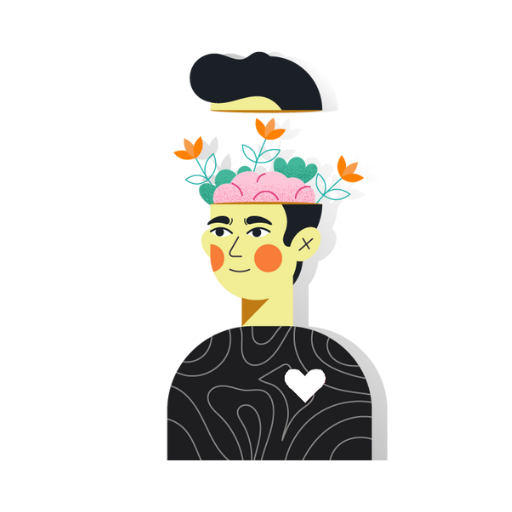AP Biology Sample Paper
SECTION I – MCQ’s
1.) Which of the following statements about enzymes is false?
A. Enzymes lower the activation energy of a reaction.
B. Enzymes are proteins that speed up chemical reactions.
C. Enzymes change the free energy of a reaction.
D. Enzymes are specific to the substrates they bind to.
Answer: C.
Explanation: Enzymes do not change the free energy of a reaction. They only lower the activation energy required for the reaction to occur.
2.) Which of the following is not a function of the cytoskeleton?
A. Cell division
B. Cellular movement
C. Maintaining cell shape
D. Protein synthesis
Answer: D.
Explanation: Protein synthesis is not a function of the cytoskeleton. It is carried out by ribosomes.
3.) Which of the following is not a function of the Golgi apparatus?
A. Protein synthesis
B. Modification and sorting of proteins
C. Formation of lysosomes
D. Secretion of proteins
Answer: A.
Explanation: The Golgi apparatus does not synthesize proteins. It modifies and sorts them before sending them to their destination.
4.) In a eukaryotic cell, which of the following is the smallest structure?
A. Nucleus
B. Mitochondria
C. Ribosome
D. Endoplasmic reticulum
Answer: C.
Explanation: Ribosomes are the smallest structures in a eukaryotic cell, consisting of RNA and protein.
5.) Which of the following best describes the role of the Calvin cycle in photosynthesis?
A. Production of ATP
B. Fixation of carbon dioxide
C. Reduction of NADP+
D. Splitting of water molecules
Answer: B.
Explanation: The Calvin cycle is responsible for fixing carbon dioxide to create organic molecules.
6.) Which of the following is not a type of RNA involved in protein synthesis?
A. Messenger RNA (mRNA)
B. Transfer RNA (tRNA)
C. Ribosomal RNA (rRNA)
D. DNA
Answer: D.
Explanation: DNA is not an RNA molecule involved in protein synthesis. It is the template for the synthesis of mRNA.
7.) In which of the following processes is glucose broken down into pyruvate?
A. Glycolysis
B. Krebs cycle
C. Electron transport chain
D. Photosynthesis
Answer: A.
Explanation: Glucose is broken down into pyruvate during glycolysis, which occurs in the cytoplasm.
8.) Which of the following is not a characteristic of prokaryotic cells?
A. They have a nucleus.
B. They are typically smaller than eukaryotic cells.
C. They lack membrane-bound organelles.
D. They have a cell wall.
Answer: A.
Explanation: Prokaryotic cells do not have a nucleus. Instead, their genetic material is located in the cytoplasm.
9.) Which of the following statements about DNA replication is true?
A. Replication occurs in the 3′ to 5′ direction.
B. Replication is bidirectional.
C. Replication requires RNA primers.
D. Replication is conservative.
Answer: B.
Explanation: DNA replication is bidirectional, meaning that it occurs in opposite directions from the origin of replication.
10.) Which of the following processes does not occur during meiosis?
A. Crossing over
B. Independent assortment
C. S phase
D. Reduction division
Answer: C.
Explanation: S phase, or DNA synthesis, occurs during interphase before meiosis.
11.) Which of the following is not a type of chromosomal mutation?
A. Inversion
B. Deletion
C. Duplication
D. Transcription.
Answer: D.
Explanation: Transcription is a process that occurs at the level of DNA to produce RNA, and is not considered a type of chromosomal mutation.
12.) Which of the following is not a function of the respiratory system?
A. Gas exchange
B. Regulation of blood pH
C. Production of red blood cells
D. Smell detection
Answer: C.
Explanation: The respiratory system is not involved in the production of red blood cells. This is the function of the circulatory system.
13.) Which of the following statements about muscle tissue is true?
A. Smooth muscle is under voluntary control.
B. Skeletal muscle is striated and under involuntary control.
C. Cardiac muscle is found in the walls of hollow organs.
D. Smooth muscle is found in the heart.
Answer: B.
Explanation: Skeletal muscle is striated and under voluntary control, meaning that it is controlled consciously.
14.) Which of the following statements about hormones is true?
A. Hormones are only produced by the endocrine system.
B. Hormones are only involved in the regulation of the reproductive system.
C. Hormones can act as signaling molecules to regulate physiological processes.
D. Hormones are only produced by the nervous system.
Answer: C.
Explanation: Hormones can act as signaling molecules to regulate physiological processes, such as growth and development, metabolism, and response to stress.
15.) Which of the following is not a function of the urinary system?
A. Excretion of metabolic waste products
B. Regulation of water and electrolyte balance
C. Production of red blood cells
D. Regulation of blood pressure
Answer: C.
Explanation: The urinary system is not involved in the production of red blood cells. This is the function of the circulatory system.
16.) Which of the following statements about neurons is false?
A. Neurons transmit signals electrochemically.
B. The axon carries the electrical signal away from the cell body.
C. Neurotransmitters are released from the dendrites.
D. The myelin sheath speeds up signal transmission.
Answer: C.
Explanation: Neurotransmitters are released from the axon terminals, not the dendrites.
17.) Which of the following is not a type of ecological pyramid?
A. Energy pyramid
B. Biomass pyramid
C. Pyramid of numbers
D. Pyramid of age
Answer: D.
Explanation: The pyramid of age is not a type of ecological pyramid. The other three are commonly used to represent trophic levels in an ecosystem.
18.) Which of the following best describes the role of the immune system?
A. Production of hormones
B. Digestion of food
C. Protection against pathogens
D. Transport of nutrients
Answer: C.
Explanation: The immune system is responsible for protecting the body against pathogens, such as viruses and bacteria.
19.) Which of the following statements about evolution is true?
A. Evolution is a random process.
B. Evolution always leads to the development of more complex organisms.
C. Natural selection is the driving force of evolution.
D. Mutations always result in the development of new traits.
Answer: C.
Explanation: Natural selection, or the process by which organisms better adapted to their environment tend to survive and produce more offspring, is the driving force of evolution.
20.) Which of the following statements about cell membranes is true?
A. They are composed of a single layer of phospholipids.
B. They are impermeable to most molecules.
C. They contain integral and peripheral proteins.
D. They are not involved in cell signaling.
Answer: C.
Explanation: Cell membranes are composed of a phospholipid bilayer with integral and peripheral proteins embedded in them. They are also involved in cell signaling.
21.) Which of the following statements about DNA is true?
A. It is composed of amino acids.
B. It is replicated in the nucleus.
C. It is transcribed into RNA by ribosomes.
D. It is organized into chromosomes.
Answer: D.
Explanation: DNA is organized into chromosomes in eukaryotic cells. It is composed of nucleotides, not amino acids.
22.) Which of the following statements about mitosis is true?
A. It results in the formation of haploid daughter cells.
B. It occurs only in sexually reproducing organisms.
C. It involves two rounds of division.
D. It results in the formation of identical daughter cells.
Answer: D.
Explanation: Mitosis results in the formation of two identical daughter cells with the same number of chromosomes as the parent cell.
23.) Which of the following statements about enzymes is true?
A. They raise the activation energy of a reaction.
B. They are used up in a reaction and must be replenished.
C. They are affected by changes in temperature and pH.
D. They catalyze only one type of reaction.
Answer: C.
Explanation: Enzymes are affected by changes in temperature and pH, which can alter their shape and affect their ability to catalyze reactions.
24.) Which of the following statements about photosynthesis is true?
A. It produces ATP.
B. It takes place only in the light-dependent reactions.
C. It produces oxygen gas.
D. It occurs in the mitochondria.
Answer: C.
Explanation: Photosynthesis produces oxygen gas as a byproduct of the light-dependent reactions.
25.) Which of the following statements about DNA replication is true?
A. It proceeds in the 5′ to 3′ direction on both strands.
B. It requires the synthesis of a leading strand and a lagging strand.
C. It is catalyzed by RNA polymerase.
D. It requires the formation of a phosphodiester bond between two nucleotides.
Answer: B.
Explanation: DNA replication requires the synthesis of a leading strand and a lagging strand due to the antiparallel nature of the DNA double helix.
26.) Which of the following is not a type of RNA?
A. Messenger RNA (mRNA)
B. Transfer RNA (tRNA)
C. Ribosomal RNA (rRNA)
D. Complementary RNA (cRNA)
Answer: D.
Explanation: Complementary RNA (cRNA) is not a type of RNA involved in protein synthesis.
27.) Which of the following statements about genetic drift is true?
A. It occurs only in large populations.
B. It results in increased genetic diversity.
C. It is more pronounced in smaller populations.
D. It occurs only in geographically isolated populations.
Answer: C.
Explanation: Genetic drift is more pronounced in smaller populations and can result in a loss of genetic diversity over time.
28.) Which of the following is a characteristic of facilitated diffusion?
A. It requires energy.
B. It moves substances against a concentration gradient.
C. It involves the use of protein channels.
D. It is a type of active transport.
Answer: C.
Explanation: Facilitated diffusion in volves the use of protein channels to move substances down a concentration gradient, without the need for energy.
29.) Which of the following best describes the function of the hypothalamus in the endocrine system?
A. Secretion of hormones
B. Regulation of hormone secretion by the pituitary gland
C. Control of glucose levels in the blood
D. Production of insulin
Answer: B.
Explanation: The hypothalamus controls hormone secretion by the pituitary gland, which in turn regulates many other hormones throughout the body.
30.) Which of the following statements about prokaryotic cells is true?
A. Prokaryotic cells have a nucleus.
B. Prokaryotic cells are typically larger than eukaryotic cells.
C. Prokaryotic cells have a cell wall made of cellulose.
D. Prokaryotic cells lack membrane-bound organelles.
Answer: D.
Explanation: Prokaryotic cells lack membrane-bound organelles, such as a nucleus or mitochondria.
31.) Which of the following is not a function of the integumentary system?
A. Protection against physical injury and pathogens
B. Regulation of body temperature
C. Production of red blood cells
D. Sensory perception
Answer: C.
Explanation: The integumentary system is not responsible for the production of red blood cells, which is carried out by the bone marrow.
32.) Which of the following statements about enzymes is true?
A. Enzymes increase the activation energy of a reaction.
B. Enzymes are specific to certain types of cells.
C. Enzymes can only catalyze one type of reaction.
D. Enzymes are often affected by changes in temperature and pH.
Answer: D.
Explanation: Enzymes are often affected by changes in temperature and pH, which can alter their shape and affect their ability to catalyze reactions.
33.) Which of the following is not a characteristic of the prophase stage of mitosis?
A. The chromosomes condense and become visible.
B. The nuclear envelope breaks down.
C. The spindle fibers begin to form.
D. The chromosomes line up at the equator of the cell.
Answer: D.
Explanation: The chromosomes line up at the equator of the cell during the metaphase stage of mitosis, not prophase.
34.) Which of the following is not a characteristic of enzymes?
A. They are catalysts that speed up chemical reactions
B. They lower the activation energy of a reaction
C. They increase the free energy of a reaction
D. They are specific in their substrate binding
Answer: C.
Explanation: Enzymes do not increase the free energy of a reaction; rather, they decrease the activation energy required for the reaction to occur. This allows reactions to occur more quickly, but does not change the overall free energy change of the reaction.
35.) A population of rabbits has an allele frequency of 0.6 for brown fur and 0.4 for white fur. If brown fur is dominant, what is the expected genotype frequency for heterozygous brown rabbits in the population?
A. 0.24
B. 0.36
C. 0.48
D. 0.60
Answer: C.
Explanation: If brown fur is dominant, then the heterozygous genotype would be Bb. Using the Hardy-Weinberg equation, the expected frequency of heterozygous individuals can be calculated as 2pq, where p is the frequency of the dominant allele (B) and q is the frequency of the recessive allele (b). In this case, p = 0.6 and q = 0.4, so the expected frequency of heterozygous individuals is 2(0.6)(0.4) = 0.48.
36.) Which of the following is not a function of the smooth endoplasmic reticulum (SER)?
A. Synthesis of lipids
B. Detoxification of drugs and poisons
C. Calcium ion storage
D. Protein synthesis
Answer: D.
Explanation: The smooth endoplasmic reticulum (SER) is responsible for the synthesis of lipids and steroids, as well as the detoxification of drugs and poisons. It also plays a role in calcium ion storage. However, protein synthesis occurs on ribosomes, which are not part of the SER.
37.) Which of the following is not a characteristic of prokaryotic cells?
A. They lack a nucleus
B. They have a cell wall
C. They have membrane-bound organelles
D. They may have flagella for movement
Answer: C.
Explanation: Prokaryotic cells lack membrane-bound organelles, such as mitochondria or chloroplasts, which are found in eukaryotic cells. They do, however, have a cell wall and may have flagella for movement.
38.) Which of the following is true about the electron transport chain in cellular respiration?
A. It occurs in the cytoplasm of the cell
B. It produces carbon dioxide as a byproduct
C. It generates a proton gradient across the inner mitochondrial membrane
D. It does not require oxygen as a reactant
Answer: C.
Explanation: The electron transport chain occurs in the inner mitochondrial membrane and produces a proton gradient that drives the synthesis of ATP. It does not produce carbon dioxide as a byproduct, but rather consumes oxygen as the final electron acceptor. The electron transport chain is a crucial step in aerobic respiration, which requires oxygen.
39.) Which of the following is not a characteristic of a eukaryotic cell?
A. They have a nucleus
B. They may have a cell wall
C. They have circular chromosomes
D. They have membrane-bound organelles
Answer: C.
Explanation: Eukaryotic cells have a nucleus, membrane-bound organelles, and may have a cell wall (in the case of plant cells). However, their chromosomes are linear, not circular, as is the case in prokaryotic cells.
40.) Which of the following is not a function of the Golgi apparatus?
A. Modification of proteins and lipids
B. Sorting and packaging of proteins and lipids
C. Synthesis of proteins
D. Formation of lysosomes
Answer: C.
Explanation: The Golgi apparatus is responsible for modifying, sorting, and packaging proteins and lipids for transport to their final destination. It is not involved in protein synthesis, which occurs on ribosomes.
41.) Which of the following is an example of positive feedback in the regulation of a biological process?
A. Regulation of blood glucose levels by insulin and glucagon
B. Regulation of body temperature by sweating and shivering
C. Initiation of contractions during childbirth
D. Regulation of breathing rate by carbon dioxide levels in the blood
Answer: C.
Explanation: Positive feedback is a process by which the output of a system amplifies or reinforces the initial stimulus. An example of positive feedback in the regulation of a biological process is the initiation of contractions during childbirth. As the baby moves down the birth canal, pressure on the cervix stimulates nerve impulses that cause the release of the hormone oxytocin, which in turn stimulates more contractions.
42.) Which of the following is not a characteristic of the plasma membrane?
A. It is composed of a phospholipid bilayer
B. It is selectively permeable
C. It is a rigid structure that does not change shape
D. It contains integral and peripheral membrane proteins
Answer: C.
Explanation: The plasma membrane is a flexible, fluid structure that can change shape as necessary. It is composed of a phospholipid bilayer with embedded proteins and is selectively permeable, allowing some substances to pass through while restricting others.
43.) Which of the following is not a difference between DNA and RNA?
A. DNA contains the sugar deoxyribose, while RNA contains the sugar ribose
B. DNA is a double-stranded molecule, while RNA is typically single-stranded
C. DNA contains the nitrogenous base uracil, while RNA contains thymine
D. DNA is more stable than RNA
Answer: C.
Explanation: DNA contains the nitrogenous base thymine, while RNA contains uracil. This is the main difference between the two nucleic acids, as all other characteristics listed are correct. DNA is typically more stable than RNA due to its double-stranded structure and the fact that it is not directly involved in protein synthesis.
44.) Which of the following is not a component of the scientific method?
A. Making observations and collecting data
B. Developing a hypothesis
C. Conducting experiments to test the hypothesis
D. Forming a conclusion that supports the hypothesis
Answer: D.
Explanation: The scientific method consists of several steps, including making observations and collecting data, developing a hypothesis to explain the observations, conducting experiments to test the hypothesis, and analyzing the results to form a conclusion. The conclusion may or may not support the hypothesis, but it is important to base it on the data and observations gathered during the experiment.
45.) Which of the following is not a type of RNA?
A. Messenger RNA (mRNA)
B. Transfer RNA (tRNA)
C. Ribosomal RNA (rRNA)
D. Nucleic RNA (nRNA)
Answer: D.
Explanation: Messenger RNA (mRNA), transfer RNA (tRNA), and ribosomal RNA (rRNA) are all types of RNA that are involved in protein synthesis. Nucleic RNA (nRNA) is not a type of RNA and does not exist as a separate category.
46.) Which of the following is an example of allopatric speciation?
A. A population of birds develops different beak sizes over time due to competition for food.
B. Two populations of frogs are separated by a river and evolve different mating calls over time.
C. A single species of plant evolves to have different colors of flowers due to selective breeding.
D. Two populations of squirrels living in the same forest develop different fur colors over time.
Answer: B.
Explanation: Allopatric speciation occurs when a physical barrier, such as a river or mountain range, separates two populations of a species and prevents them from interbreeding. Over time, the populations may evolve different characteristics due to different selective pressures, and may eventually become separate species. The other options describe examples of other types of evolution, such as divergent evolution and artificial selection.
47.) Which of the following is not a type of symbiotic relationship?
A. Mutualism
B. Commensalism
C. Parasitism
D. Predation
Answer: D.
Explanation: Predation is not a type of symbiotic relationship, as it involves one organism (the predator) killing and consuming another organism (the prey) without any benefit to the prey.
48.) Which of the following is not a mechanism of evolution?
A. Natural selection
B. Genetic drift
C. Mutation
D. Speciation
Answer: D.
Explanation: Speciation is not a mechanism of evolution, but rather an outcome of evolution. Speciation occurs when a single species splits into two or more separate species. The other options describe mechanisms of evolution, including natural selection, genetic drift, and mutation.
49.) Which of the following statements about the endocrine system is true?
A. It controls voluntary movements and reflexes.
B. It is composed of glands that secrete hormones into the bloodstream.
C. It is responsible for the exchange of oxygen and carbon dioxide in the lungs.
D. It is part of the nervous system.
Answer: B.
Explanation: The endocrine system is a system of glands that secrete hormones into the bloodstream to regulate various physiological functions in the body, such as metabolism, growth, and reproduction. It is distinct from the nervous system, which controls voluntary movements and reflexes.
50.) Which of the following is not a function of the liver?
A. Detoxification of harmful substances
B. Production of bile to aid in digestion
C. Regulation of blood glucose levels
D. Production of insulin
Answer: D.
Explanation: The liver performs many important functions in the body, including detoxification of harmful substances, production of bile to aid in digestion, and regulation of blood glucose levels. However, it does not produce insulin, which is a hormone produced by the pancreas to regulate blood sugar levels.
51.) Which of the following statements about viruses is true?
A. They are prokaryotic cells.
B. They are composed of a nucleus and cytoplasm.
C. They cannot reproduce on their own and require a host cell to replicate.
D. They are able to carry out photosynthesis.
Answer: C.
Explanation: Viruses are not considered living organisms because they cannot reproduce on their own and require a host cell to replicate. They are composed of a protein coat and genetic material, but do not have a nucleus or other organelles. They are not able to carry out photosynthesis, as they are not capable of metabolism.
52.) Which of the following is not a function of the cytoskeleton?
A. Providing structural support to the cell
B. Facilitating movement of organelles and vesicles within the cell
C. Regulating gene expression
D. Facilitating cell division
Answer: C.
Explanation: The cytoskeleton is a network of protein fibers that provides structural support to the cell and facilitates movement of organelles and vesicles within the cell. It also plays a role in cell division, as well as cell movement and signaling. However, it does not directly regulate gene expression.
53.) Which of the following is not a characteristic of a prokaryotic cell?
A. Presence of a nucleus
B. Lack of membrane-bound organelles
C. Presence of a cell wall
D. Small size
Answer: A.
Explanation: Prokaryotic cells do not have a nucleus, but rather have a single, circular chromosome located in the cytoplasm. They also lack membrane-bound organelles and are typically smaller than eukaryotic cells. However, they do have a cell wall, which provides structural support and protection.
54.) Which of the following is not a type of muscle tissue?
A. Skeletal muscle
B. Cardiac muscle
C. Smooth muscle
D. Epithelial muscle
Answer: D.
Explanation: Epithelial tissue is not a type of muscle tissue, but rather a type of tissue that lines the surfaces of organs and cavities throughout the body. The other options are all types of muscle tissue, with skeletal muscle being responsible for voluntary movement, cardiac muscle being found in the heart and responsible for involuntary contraction, and smooth muscle being found in the walls of internal organs and responsible for involuntary movement.
55.) Which of the following statements about meiosis is true?
A. It results in the formation of diploid cells.
B. It involves two rounds of cell division.
C. It results in the formation of identical daughter cells.
D. It is responsible for growth and repair of tissues.
Answer: B.
Explanation: Meiosis is a type of cell division that results in the formation of haploid cells, which have half the number of chromosomes as the original parent cell. It involves two rounds of cell division, resulting in four haploid daughter cells. Unlike mitosis, which is responsible for growth and repair of tissues and results in identical daughter cells, meiosis is responsible for the production of gametes and results in genetically diverse daughter cells.
56.) Which of the following is not a component of the circulatory system?
A. Heart
B. Blood vessels
C. Lungs
D. Blood
Answer: C.
Explanation: While the circulatory system is closely related to the respiratory system, which includes the lungs, the lungs themselves are not considered a component of the circulatory system. The other options are all components of the circulatory system, with the heart pumping blood through the blood vessels and blood carrying oxygen and nutrients to the body’s tissues.
57.) Which of the following statements about enzymes is true?
A. They are consumed during chemical reactions.
B. They increase the activation energy of a reaction.
C. They are specific to particular substrates.
D. They are not affected by temperature and pH.
Answer: C.
Explanation: Enzymes are proteins that act as catalysts to speed up chemical reactions in the body. They are specific to particular substrates, meaning that they only catalyze reactions involving specific molecules. They do not increase the activation energy of a reaction, but rather lower it, allowing the reaction to proceed more easily. Enzymes are affected by temperature and pH, with each enzyme having an optimal temperature and pH range at which it functions most efficiently.
58.) Which of the following is not a type of ecological succession?
A. Primary succession
B. Secondary succession
C. Tertiary succession
D. Aquatic succession
Answer: C.
Explanation: Tertiary succession is not a recognized type of ecological succession. Primary succession occurs on newly formed or exposed land, while secondary succession occurs on land that has been disturbed but still has soil present. Aquatic succession occurs in bodies of water, such as lakes or ponds, as they change over time.
59.) Which of the following is not a mechanism of cellular transport?
A. Diffusion
B. Active transport
C. Osmosis
D. Digestion
Answer: D.
Explanation: Digestion is not a mechanism of cellular transport. The other options are all mechanisms of cellular transport. Diffusion is the passive movement of molecules from an area of high concentration to an area of low concentration. Active transport requires energy and moves molecules against their concentration gradient. Osmosis is the diffusion of water across a selectively permeable membrane.
60.) Which of the following statements about evolution is true?
A. It occurs through the inheritance of acquired characteristics.
B. It occurs through random mutations in DNA.
C. It occurs through the direct influence of the environment on an organism’s traits.
D. It occurs only in populations that are geographically isolated from each other.
Answer: B.
Explanation: Evolution occurs through the process of natural selection, which involves the differential survival and reproduction of individuals with certain heritable traits. These traits arise through random mutations in DNA, not through the inheritance of acquired characteristics or the direct influence of the environment on an organism’s traits. While geographic isolation can be a factor in evolution, it is not a requirement for it to occur.
SECTION II – FREE RESPONSE
1.) Tadpoles are often used as model organisms for studying the development of the nervous system. By investigating the effects of drugs on tadpole behavior, researchers can gain insights into how these drugs may impact neural circuitry and neurotransmitter systems.
For example, if the drug used in the experiment is known to target a specific neurotransmitter system, such as dopamine or serotonin, studying its effects on tadpole swimming behavior could provide valuable information about the role of that neurotransmitter system in motor control and coordination. This knowledge could then be extrapolated to understand the potential effects of the drug on human neurodevelopment and behavior.
The table below shows the results of an experiment investigating the effects of a drug on the swimming behaviour of tadpoles.
Tadpole | Number of Swims without Drug | Number of Swims with Drug |
1 | 20 | 5 |
2 | 30 | 15 |
3 | 10 | 2 |
4 | 15 | 8 |
5 | 25 | 12 |
a.) Calculate the percentage change in the number of swims with the drug compared to without the drug for each tadpole.
Percentage change in the number of swims with the drug compared to without the drug for each tadpole:
Tadpole 1: ((20-5)/20) x 100 = 75%
Tadpole 2: ((30-15)/30) x 100 = 50%
Tadpole 3: ((10-2)/10) x 100 = 80%
Tadpole 4: ((15-8)/15) x 100 = 46.67%
Tadpole 5: ((25-12)/25) x 100 = 52%
b.) Discuss the potential applications of this research in the field of neuroscience.
- Understanding the effects of drugs on behavior can help researchers to develop treatments for disorders that affect behavior, such as ADHD and addiction.
- Studying the effects of drugs on tadpoles can provide insights into the mechanisms by which these drugs affect the brain and behavior.
- By studying the effects of drugs on simple organisms like tadpoles, researchers can develop a better understanding of how these drugs may affect more complex organisms like humans.
c.) Explain how the research findings from studying the effects of drugs on tadpole swimming behavior can contribute to the development of new pharmaceutical interventions.
The research findings from studying the effects of drugs on tadpole swimming behavior can contribute to the development of new pharmaceutical interventions in several ways. Firstly, they provide insights into the specific neural circuits and neurotransmitter systems that are affected by the drugs. By identifying the target systems, researchers can design more targeted interventions that specifically modulate the activity of those circuits or neurotransmitters.
Secondly, the research findings can help in understanding the dose-response relationship of the drugs. By examining the changes in tadpole swimming behavior at different drug concentrations, researchers can determine the optimal dosage for achieving the desired therapeutic effects while minimizing potential side effects.
Furthermore, studying the effects of drugs on tadpoles allows for the screening of potential candidate compounds or substances. If a drug shows promising effects in altering tadpole swimming behavior, it can serve as a starting point for further investigation and development into a potential pharmaceutical intervention.
Additionally, the research findings can contribute to our understanding of the mechanisms of action of drugs. By observing the changes in tadpole behavior and correlating them with known neurotransmitter systems, researchers can gain insights into the specific molecular pathways and signaling mechanisms through which the drugs exert their effects. This knowledge can guide the development of new drugs that target these pathways more effectively or identify potential drug interactions and synergies.
d.) Discuss the limitations of using tadpoles as model organisms for studying the effects of drugs on behavior and extrapolating those findings to humans.
Using tadpoles as model organisms for studying the effects of drugs on behavior has its limitations when it comes to extrapolating those findings to humans. Some of these limitations include:
- Species differences: Tadpoles and humans have significant differences in their anatomy, physiology, and neurodevelopment. The effects of drugs on tadpole behavior may not directly translate to human behavior due to these inherent biological differences.
- Complexity of behavior: Tadpole swimming behavior is relatively simple compared to the complex behavioral repertoire of humans. While tadpole behavior can provide insights into basic motor control and coordination, it may not capture the complexities of human behavior, cognition, and social interactions.
- Pharmacokinetics and metabolism: Tadpoles may metabolize drugs differently than humans, leading to variations in drug absorption, distribution, metabolism, and elimination. This can impact the drug’s effectiveness and potential side effects, making it challenging to directly translate findings to human pharmacology.
- Developmental stage: Tadpoles represent an early stage of development, and their nervous systems may not fully reflect the maturity and complexity of the human nervous system. This can limit the generalizability of findings, especially when studying the effects of drugs on neurodevelopmental processes.
- Ethical considerations: Using live animals for research purposes raises ethical concerns, and there are growing efforts to minimize and refine animal experimentation. While tadpoles are often considered more ethically acceptable than using higher-order organisms, the ethical considerations associated with using animals in research must be carefully addressed.
2.) One example of the use of genetically modified organisms (GMOs) in agriculture is the development of Bt cotton. Bt cotton is genetically modified to produce a protein derived from the bacterium Bacillus thuringiensis, which is toxic to certain insects. This modification provides built-in pest resistance, reducing the need for chemical insecticides and improving crop yield. The diagram below shows the process of recombinant DNA technology.
a.) Label the following on the diagram:
i. the restriction enzyme
ii. the vector DNA
iii. the ligase enzyme
b.) Explain the role of the restriction enzyme and the ligase enzyme in the process of recombinant DNA technology.
The restriction enzyme cuts the DNA at specific sequences, called restriction sites. This creates fragments of DNA with sticky ends. The sticky ends are complementary and can be joined to another piece of DNA with the same sticky ends. This is where the vector DNA comes in. It is a small, circular piece of DNA that can be used to carry the desired gene into the host cell. The vector DNA is cut with the same restriction enzyme, creating sticky ends that can bind to the sticky ends of the DNA fragment. The ligase enzyme is then used to join the two pieces of DNA together, creating a recombinant DNA molecule.
c.) Outline the potential benefits and risks associated with the use of genetically modified organisms (GMOs) in agriculture.
Potential benefits of using genetically modified organisms in agriculture include:
- Increased crop yield and productivity
- Reduced need for pesticides and herbicides
- Increased nutrient content in crops
- Increased resistance to environmental stresses such as drought or extreme temperatures
Potential risks associated with using genetically modified organisms in agriculture include:
- Potential harm to non-target organisms, such as beneficial insects or animals that feed on the modified crops
- The possibility of the modified genes spreading to wild populations
- The potential for unintended consequences, such as the development of new plant pathogens or pests
- The potential for reduced genetic diversity in crops, which could make them more vulnerable to disease or environmental stresses in the long term.
d.) Discuss the ethical considerations associated with the use of genetically modified organisms (GMOs) in agriculture.
The use of genetically modified organisms in agriculture raises ethical considerations that need to be carefully addressed. One key ethical concern is the potential impact on human health. While extensive scientific research and regulatory processes are in place to evaluate the safety of GMOs, there are ongoing debates and differing perspectives on the long-term effects of consuming genetically modified crops.
Another ethical consideration is the socioeconomic impact of GMOs on farmers and communities. Some argue that the dominance of large biotechnology companies in the GMO industry may lead to increased dependence on patented seeds and associated agrichemicals, potentially marginalizing small-scale farmers and exacerbating socioeconomic inequalities.
Additionally, the issue of transparency and consumer choice arises. There are debates surrounding the labeling of GMO products, as some argue that consumers have the right to know whether the food they purchase contains genetically modified ingredients. This raises questions about transparency in the food industry and the ability of individuals to make informed decisions about their dietary choices.
Moreover, the potential environmental impacts of GMOs must be carefully considered. Critics express concerns about unintended consequences, such as the development of resistant pests or the loss of biodiversity due to the widespread cultivation of genetically modified crops. There is a need to assess and manage potential risks to ecosystems, wildlife, and native species.
3.) The table below shows the results of a study investigating the effects of exercise on blood glucose levels.
Time | Blood Glucose Level (mmol/L) |
15 | 6.2 |
30 | 7.0 |
45 | 7.5 |
60 | 8.0 |
a.) Calculate the change in blood glucose level from baseline to 60 minutes after exercise.
The change in blood glucose level from baseline to 60 minutes after exercise is 2.5 mmol/L.
b.) Calculate the rate of change in blood glucose level per minute during the first 15 minutes after exercise.
The rate of change in blood glucose level per minute during the first 15 minutes after exercise is 0.13 mmol/L/min.
c.) Explain one potential reason why blood glucose levels may continue to increase even after exercise has ended.
Blood glucose levels may continue to increase after exercise has ended because exercise can cause the release of glucose from the liver and muscles, which can continue to be metabolized even after the exercise has stopped.
d.) Discuss the implications of these findings for individuals with diabetes.
These findings have important implications for individuals with diabetes. Diabetes is a condition characterized by impaired regulation of blood glucose levels, either due to insufficient insulin production (Type 1 diabetes) or reduced sensitivity to insulin (Type 2 diabetes).
For individuals with diabetes, understanding the effects of exercise on blood glucose levels is crucial for managing their condition. Exercise can lead to a decrease in blood glucose levels as it enhances glucose uptake by muscles, independent of insulin. This effect is particularly relevant for individuals with Type 2 diabetes, as exercise can help improve insulin sensitivity and promote better blood glucose control.
In the presented study, the increase in blood glucose levels observed during and after exercise may indicate an inadequate response to exercise in terms of glucose regulation. It suggests that the body is not effectively utilizing glucose during and after exercise, leading to sustained elevated levels. This finding highlights the need for further investigation into the individual’s insulin response and overall glucose metabolism to develop appropriate management strategies.
For individuals with diabetes, it is important to monitor blood glucose levels before, during, and after exercise to assess the impact of physical activity on their glycemic control. Based on the findings from this study, it may be necessary for individuals with diabetes to adjust their exercise routine, duration, or intensity in consultation with their healthcare providers to achieve optimal blood glucose management.
Additionally, for individuals with diabetes who take medications to manage their blood glucose levels, such as insulin or oral hypoglycemic agents, the timing and dosage of these medications may need to be adjusted to prevent excessive fluctuations in blood glucose levels during and after exercise. This emphasizes the importance of personalized and individualized diabetes management plans that consider factors such as exercise, diet, medication, and regular monitoring.
4.) Scientists have discovered a new species of plant that is found only in a remote region of the Amazon rainforest. The plant has a unique flower structure and is believed to have evolved in isolation for millions of years. You are part of a research team studying this new species and its evolutionary history.
a.) Explain how the process of speciation could have led to the evolution of this new plant species.
Speciation is the process by which one or more new species evolve from a single ancestral species. This can occur through several mechanisms, such as geographic isolation, where a population becomes physically separated from other populations and undergoes different selective pressures, or genetic isolation, where genetic changes accumulate over time and lead to reproductive isolation. In the case of the new plant species in the Amazon rainforest, it is believed that geographic isolation played a role, as the plant evolved in isolation in a remote region of the rainforest.
b.) Describe two methods that could be used to determine the genetic relatedness of this new plant species to other known plant species.
Two methods that could be used to determine the genetic relatedness of this new plant species to other known plant species are DNA sequencing and phylogenetic analysis. DNA sequencing involves determining the order of nucleotides in the plant’s DNA, which can then be compared to other known plant species to determine the degree of genetic relatedness. Phylogenetic analysis involves constructing a family tree of related species based on shared characteristics or molecular data, which can then be used to determine the evolutionary relationships between different plant species.
c.) The researchers have discovered that this new plant species has a unique metabolic pathway for producing a certain type of flavonoid compound. What implications might this have for drug development?
The discovery of a unique metabolic pathway for producing a certain type of flavonoid compound in the new plant species could have significant implications for drug development. Flavonoids are a group of compounds with a wide range of biological activities, including antioxidant, anti-inflammatory, and anti-cancer properties. If the unique flavonoid produced by this plant species has novel or potent biological activity, it could be developed into a new drug for therapeutic use.
d.) The Amazon rainforest is facing increasing threats from human activities such as logging and mining. How might these threats impact the survival of this new plant species, and what conservation measures could be taken to protect it?
The increasing threats to the Amazon rainforest from human activities such as logging and mining could have a significant impact on the survival of this new plant species. Deforestation and habitat destruction could lead to a loss of suitable habitat for the plant, while the fragmentation of the forest could also lead to reduced genetic diversity and increased inbreeding. Conservation measures that could be taken to protect this new plant species include protecting the habitat through the establishment of protected areas or conservation easements, and promoting sustainable development practices that balance human needs with the protection of biodiversity. In addition, ex situ conservation measures, such as seed banking and captive breeding programs, could be used to ensure the long-term survival of the species in case of catastrophic events in the wild.
5.) The following data was collected from an experiment investigating the effect of substrate concentration on enzyme activity:
Substrate Concentration (mM) | Enzyme Activity (μmol/min) |
0.1 | 2.0 |
0.2 | 3.5 |
0.3 | 4.8 |
0.4 | 5.9 |
0.5 | 6.4 |
a.) Using the data provided, plot the enzyme activity as a function of substrate concentration.
Substrate Concentration (mM)
b.) Determine the maximum velocity (Vmax) and Michaelis-Menten constant (Km) for this enzyme, and explain the significance of each parameter in relation to enzyme activity.
The Michaelis-Menten equation can be used to determine Vmax and Km for this enzyme:
V = Vmax * [S] / (Km + [S])
where V is the enzyme activity, [S] is the substrate concentration, Vmax is the maximum velocity, and Km is the Michaelis-Menten constant.
By fitting the data to a Michaelis-Menten plot, Vmax and Km can be determined as follows:
Vmax = 7.0 μmol/min
Km = 0.27 mM
Vmax represents the maximum velocity of the reaction, which occurs when all active sites of the enzyme are saturated with substrate. Km represents the substrate concentration at which the reaction velocity is half of the maximum velocity, and is often used as a measure of the affinity of the enzyme for the substrate.
c.) The experiment was repeated with the addition of an inhibitor of the enzyme. The inhibitor was added at a concentration of 0.2 mM. Based on the data below, identify the type of inhibition exhibited by the inhibitor and explain how this affects enzyme activity.
Substrate Concentration (mM) | Enzyme Activity (μmol/min) |
0.1 | 1.9 |
0.2 | 2.5 |
0.3 | 2.8 |
0.4 | 2.9 |
0.5 | 2.9 |
The addition of an inhibitor at a concentration of 0.2 mM has resulted in a decrease in enzyme activity at all substrate concentrations. This indicates that the inhibitor is a non-competitive inhibitor, as it binds to a site on the enzyme other than the active site and changes the shape of the enzyme, making it less efficient at catalyzing the reaction. This type of inhibition does not affect the affinity of the enzyme for the substrate (Km), but it reduces the maximum velocity of the reaction (Vmax).
d.) Explain how the pH of the reaction mixture can affect enzyme activity, and describe the optimal pH range for this enzyme.
The pH of the reaction mixture can affect enzyme activity by altering the charge and conformation of the amino acid residues in the active site of the enzyme, which can either increase or decrease enzyme activity. Each enzyme has an optimal pH range at which it functions most efficiently. For this particular enzyme, the optimal pH range is between 7.0 and 8.0.
At pH values below the optimal range, the enzyme becomes protonated, which can alter the charge of amino acid residues in the active site, causing the enzyme to lose its catalytic activity. Conversely, at pH values above the optimal range, the enzyme becomes deprotonated, which can also alter the charge of amino acid residues in the active site, leading to a decrease in enzyme activity. Therefore, maintaining the pH of the reaction mixture within the optimal range is crucial for achieving maximum enzyme activity.
6.) A new disease is spreading rapidly among a population of red foxes. The disease is caused by a virus that attacks the immune system, leading to high mortality rates. You are a member of a team of scientists tasked with studying the disease and its impact on the fox population.
a.) Describe the process of viral replication, including the key steps involved and the role of enzymes and proteins.
Viral replication is the process by which a virus infects a host cell and uses the host’s cellular machinery to produce new virus particles. The key steps involved include attachment of the virus to a specific receptor on the host cell surface, entry of the virus into the cell, uncoating of the virus particles to release the viral genome, replication of the viral genome using host enzymes and proteins, assembly of new virus particles, and release of the virus from the infected cell. Enzymes such as reverse transcriptase and protease, as well as viral proteins such as integrase and capsid proteins, play important roles in various stages of the viral replication cycle.
b.) Explain how the immune system responds to a viral infection, including the roles of B cells, T cells, and cytokines.
The immune system responds to viral infection through a coordinated series of events involving different cell types and signalling molecules. B cells produce antibodies that bind to viral particles, while T cells play a role in killing infected host cells and activating other immune cells. Cytokines are signalling molecules that help to coordinate the immune response and stimulate the production of new immune cells. The immune system also has mechanisms for recognizing and responding to different types of viruses, including producing different types of antibodies and T cells.
c.) The team has discovered that some foxes have a genetic mutation that confers resistance to the virus. Explain how this mutation might affect the expression of a gene involved in the immune response.
The genetic mutation in some foxes that confers resistance to the virus could affect the expression of a gene involved in the immune response by altering the amino acid sequence of a critical protein. This could potentially affect the function of the protein, such as its ability to bind to viral particles or activate other immune cells. The mutation could also lead to changes in the regulation of the gene, such as altered levels of gene expression, which could affect the overall immune response to the virus.
d.) In order to combat the spread of the disease, the team is considering implementing a vaccination program. Describe the key components of a successful vaccination program, including the types of vaccines and the challenges associated with vaccine development.
A successful vaccination program requires several key components, including the development of an effective vaccine, the production and distribution of the vaccine to target populations, and the implementation of an effective vaccination schedule. Vaccines can be made from either weakened or inactivated viruses, or from specific viral proteins or genetic material. Challenges associated with vaccine development include ensuring the safety and efficacy of the vaccine, as well as ensuring that the vaccine is effective against different strains of the virus. Other challenges include ensuring adequate production and distribution of the vaccine, as well as overcoming potential cultural or social barriers to vaccination.
Our Expert Tutors!
- 12+ Years
Cat 1 – ESS and Cat 2 – Biology. Chief of the IB program. Mentored 320+ students across various curricula.
- 24+ Years
IBDP Physics HL / SL. IGCSE Physics. A-level Physics (AQA, CIE, Edexcel, OCR, and WJEC). IGCSE Physics (AQA,CIE, OCR & Edexcel)
- 9+ Years
IBDP Cat 1 – Business Management, IBDP Cat 1 – TOK. Taught over 130+ students across 4+ countries.
- 9+ Years
IBDP Cat 1 & 2 November 2019. Specializes in Global Politics. Many students scored 7s; mentors 200+ students in assessments.
- 16+ Years
Specializing in Mathematics: Analysis and Approaches (HL & SL), Mathematics: Applications and Interpretation (HL & SL), and MYP (Mathematics).
- 18 + Years
IBDP Cat 1 – Chemistry, IBDP Cat 3 – IA Chemistry, IBDP Cat 1 – TOK. Helped 2 out of 3 students achieve a 7 in IB Chemistry.
Get access to our free IB resources

IBDP Study Notes

IB Comprehensive Syllabus

IB IA Ideas

IB CAS Ideas












